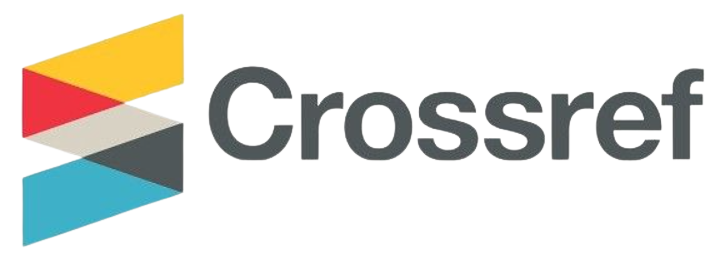Segmentasi Pelanggan Majalah pada Situs Web E-Commerce dengan K-Means++ dan Metode RFM
DOI:
https://doi.org/10.25126/jtiik.2024118208Kata Kunci:
Segmentasi Pelanggan, E-Commerce, K-Means++, RFM, CRISP-DMAbstrak
Segmentasi pelanggan merupakan salah satu metode yang dapat diterapkan untuk memaksimalkan peluang bisnis. Hal tersebut dapat membantu bisnis agar tetap kompetitif dalam persaingan pasar. Penerapan Artificial Intelligence (AI) dapat membantu dalam memberikan pemahaman kepada pelaku bisnis tentang segmentasi pelanggan berdasarkan riwayat transaksi. Penelitian ini menerapkan metode Recency, Frequency, and Monetary (RFM) yang dipadukan dengan algoritma clustering K-Means++ untuk melakukan segmentasi pelanggan. Silhouette score menjadi indikator pemilihan nilai k yang paling optimal dalam menentukan jumlah cluster. Kerangka kerja CRISP-DM yang digunakan dalam makalah ini juga membantu mempertahankan proses analisis yang konsisten. Pendekatan statistik sederhana ddigunakan untuk mengklasifikasikan setiap fitur dalam RFM menjadi label low, medium, dan high dalam hal menangkap pola segmentasi pelanggan. Hasil eksperimen menunjukkan nilai k = 3 sebagai yang paling optimal berdasarkan nilai WSS sebesar 843,214747 dan silhouette score sebesar 0,638181. Eksperimen juga menunjukkan bahwa cluster 0 memiliki nilai RFM rata-rata sebesar 1,14 (low), 1,20 (low), dan 301.640 (low). Cluster 1 memiliki nilai RFM rata-rata sebesar 249,61 (high), 2,62 (medium), dan 799,934 (medium). Cluster 2 memiliki nilai RFM rata-rata sebesar 233,01 (medium), 6,41 (high), dan 2018,088 (high).
Abstract
Customer segmentation is one method that can be applied to maximize business opportunities. It can help businesses remain competitive in the market competition. The application of Artificial Intelligence (AI) can assist in providing business stakeholders with an understanding of customer segmentation based on transaction history. This study applies the Recency, Frequency, and Monetary (RFM) method combined with the K-Means++ clustering algorithm for customer segmentation. The Silhouette score serves as an indicator for selecting the most optimal value of k to determine the number of clusters. The CRISP-DM framework used in this paper also helps maintain a consistent analysis process. A simple statistical approach is used to classify each RFM feature into low, medium, and high labels to capture customer segmentation patterns. Experimental results show that k = 3 is the most optimal value based on a WSS value of 843.214747 and a silhouette score of 0.638181. The experiments also indicate that Cluster 0 has average RFM values of 1.14 (low), 1.20 (low), and 301,640 (low). Cluster 1 has average RFM values of 249.61 (high), 2.62 (medium), and 799,934 (medium). Cluster 2 has average RFM values of 233.01 (medium), 6.41 (high), and 2018.088 (high).
Downloads
Referensi
AGUSTINO, D. P., HARSEMADI, I. G., & BUDAYA, I. G. B. A. 2022. Edutech Digital Start-Up Customer Profiling Based On RFM Data Model Using K-Means Clustering. Journal Of Information Systems and Informatics, 4(3), 724-736.
AL-YASIR, A. Y., AFDAL, M., ZARNELLY, Z., & MARSAL, A. 2024. Analisis Loyalitas Pelanggan Business To Business Berdasarkan Model RFM Menggunakan Algoritma Fuzzy C-Means: Business to Business Customer Loyalty Analysis Based on RFM Model Using Fuzzy C-Means Algorithm. MALCOM: Indonesian Journal of Machine Learning and Computer Science, 4(1), 359-365.
ANITHA, P., PATIL, M. M. 2022. RFM model for customer purchase behavior using K-Means algorithm. Journal of King Saud University - Computer and Information Sciences, 34(5), 1785–1792.
ARYUNI, M., MADYATMADJA, E. D., MIRANDA, E. 2018, September. Customer segmentation in XYZ bank using K-means and K-medoids clustering. In 2018 International Conference on Information Management and Technology (ICIMTech) (pp. 412-416). IEEE.
BAHMANI, B., MOSELEY, B., VATTANI, A., KUMAR, R., & VASSILVITSKII, S. 2012. Scalable k-means++. arXiv preprint arXiv:1203.6402.
CHEN, A. H.-L., GUNAWAN, S. 2023. Enhancing Retail Transactions: A Data-Driven Recommendation Using Modified RFM Analysis and Association Rules Mining. Applied Sciences, 13(18), 10057
CHEN, Y., LI, M., SONG, J., MA, X., JIANG, Y., WU, S., CHEN, G. L. 2022. A study of cross-border E-commerce research trends: Based on knowledge mapping and literature analysis. Frontiers in Psychology, 13.
CHRISTY, A. J., UMAMAKESWARI, A., PRIYATHARSINI, L., NEYAA, A. 2021. RFM ranking – An effective approach to customer segmentation. Journal of King Saud University - Computer and Information Sciences, 33(10), 1251–1257.
DEDI, M. I. DZULHAQ, K. W. SARI, S. RAMDHAN, R. TULLAH, SUTARMAN. Customer Segmentation Based on RFM Value Using K-Means Algorithm. 2019. Fourth International Conference on Informatics and Computing (ICIC), Semarang, Indonesia, 2019, pp. 1-7.
DWIVEDI, Y. K., ISMAGILOVA, E., HUGHES, D. L., CARLSON, J., FILIERI, R., JACOBSON, J., JAIN, V., KARJALUOTO, H., KEFI, H., KRISHEN, A. S., KUMAR, V., RAHMAN, M. M., RAMAN, R., RAUSCHNABEL, P. A., ROWLEY, J., SALO, J., TRAN, G. A., WANG, Y. 2021. Setting the future of digital and social media marketing research: Perspectives and research propositions. International Journal of Information Management, 59, 102168.
DZULHAQ, M. I., SARI, K. W., RAMDHAN, S., & TULLAH, R. 2019. Customer segmentation based on RFM value using K-means algorithm. In 2019 Fourth International Conference on Informatics and Computing (ICIC) (pp. 1-7). IEEE.
FAUZAN M., DAVIN. 2023. Unlocking Digital Business Success: Leveraging Artificial Intelligence in Social Media Analytics for Enhanced Customer Insights and Engagement.
GAO, M., PAN, S., CHEN, S., LI, Y., PAN, N., PAN, D., SHEN, X. 2021. Identification Method of Electrical Load for Electrical Appliances Based on K-Means ++ and GCN. IEEE Access, 9, 27026–27037.
HALEEM, A., JAVAID, M., ASIM QADRI, M., PRATAP SINGH, R., SUMAN, R. 2022. Artificial intelligence (AI) applications for marketing: A literature-based study. International Journal of Intelligent Networks, 3, 119–132.
HUGHES, A.M. 1994. Strategic Database Marketing. Probus Publishing Company, Chicago.
JAIN, V., WADHWANI, K., EASTMAN, J. K. 2023. Artificial intelligence consumer behavior: A hybrid review and research agenda. Journal of Consumer Behavior.
KHAJVAND, M., ZOLFAGHAR, K., ASHOORI, S., ALIZADEH, S. 2011. Estimating customer lifetime value based on RFM analysis of customer purchase behavior: Case study. Procedia Computer Science, 3, 57–63.
MARTÍNEZ-PLUMED, F., CONTRERAS-OCHANDO, L., FERRI, C., HERNÁNDEZ-ORALLO, J., KULL, M., LACHICHE, N., ... & FLACH, P. 2019. CRISP-DM twenty years later: From data mining processes to data science trajectories. IEEE transactions on knowledge and data engineering, 33(8), 3048-3061.
MAURITSIUS, T., TURMAWAN, A., & HERDIANSYAH, H. 2023. Customer Segmentation Based On RFM: A Case Study in the context of Pandemic. In 2023 5th International Conference on Cybernetics and Intelligent System (ICORIS) (pp. 1-6). IEEE.
MIRANTIKA, N., & RIJANTO, E. 2023. Comparative Analysis Of K-Means And K-Medoids Algorithms in Determining Customer Segmentation Using RFM Model. Journal Of Engineering Science and Technology, 18(5), 2340-2351
MONALISA, S., JUNIARTI, Y., SAPUTRA, E., MUTTAKIN, F., & AHSYAR, T. K. 2023. Customer Segmentation With RFM Models And Demographic Variable Using DBSCAN Algorithm. TELKOMNIKA (Telecommunication Computing Electronics And Control), 21(4), 742-749.
PEDREGOSA, F., VAROQUAUX, GA"EL, GRAMFORT, A., MICHEL, V., THIRION, B., GRISEL, O. 2011. Scikit-learn: Machine learning in Python. Journal of Machine Learning Research, 12(Oct), 2825–2830.
RAHIM, M. A., MUSHAFIQ, M., KHAN, S., ARAIN, Z. A. 2021. RFM-based repurchase behavior for customer classification and segmentation. Journal of Retailing and Consumer Services, 61, 102566.
ROUSSEEUW, P. J. 1987. Silhouettes: a graphical aid to the interpretation and validation of cluster analysis. Journal of computational and applied mathematics, 20, 53-65.
ROSÁRIO, A., RAIMUNDO, R. 2021. Consumer Marketing Strategy and E-commerce in the Last Decade: A Literature Review. Journal of Theoretical and Applied Electronic Commerce Research, 16(7), 3003–3024.
MONALISA S. AND KURNIA F.. 2019. Analysis of DBSCAN and K-means algorithm for evaluating outlier on RFM model of customer behaviour. Telkomnika (Telecommunication Comput. Electron. Control., vol. 17, no. 1, pp. 110–117, 2019, doi: 10.12928/TELKOMNIKA.v17i1.9394.
SARKER, I. H. 2021. Machine Learning: Algorithms, Real-World Applications and Research Directions. SN Computer Science, 2(3), 160.
SARKER, I. H. 2022. AI-Based Modeling: Techniques, Applications and Research Issues Towards Automation, Intelligent and Smart Systems. SN Computer Science, 3(2), 158.
SIEBERT, M., KOHLER, C., SCERRI, A., & TSATSARONIS, G. Technical Background and Methodology for the Elsevier’s Artificial Intelligence Report. 2018.
THARA D.K., B.G, PREMASUDHA., XIONG, F. 2019. Auto-detection of epileptic seizure events using deep neural network with different feature scaling techniques. Pattern Recognition Letters, 128, 544–550.
VERMA, S., SHARMA, R., DEB, S., MAITRA, D. 2021. Artificial intelligence in marketing: Systematic review and future research direction. International Journal of Information Management Data Insights, 1(1), 100002.
WIRTH, R., HIPP, J. 2000, April. CRISP-DM: Towards a standard process model for data mining. In Proceedings of the 4th International Conference on the Practical Applications of knowledge discovery and Data Mining (Vol. 1, pp. 29-39).
WOLD, S., ESBENSEN, K., GELADI, P. 1987. Principal component analysis. Chemometrics and Intelligent Laboratory Systems, 2(1–3), 37–52.
ZHOU, J., WEI, J., XU, B. 2021. Customer segmentation by web content mining. Journal of Retailing and Consumer Services, 61, 102588.
Unduhan
Diterbitkan
Terbitan
Bagian
Lisensi
Hak Cipta (c) 2024 Jurnal Teknologi Informasi dan Ilmu Komputer

Artikel ini berlisensiCreative Commons Attribution-ShareAlike 4.0 International License.

Artikel ini berlisensi Creative Common Attribution-ShareAlike 4.0 International (CC BY-SA 4.0)
Penulis yang menerbitkan di jurnal ini menyetujui ketentuan berikut:
- Penulis menyimpan hak cipta dan memberikan jurnal hak penerbitan pertama naskah secara simultan dengan lisensi di bawah Creative Common Attribution-ShareAlike 4.0 International (CC BY-SA 4.0) yang mengizinkan orang lain untuk berbagi pekerjaan dengan sebuah pernyataan kepenulisan pekerjaan dan penerbitan awal di jurnal ini.
- Penulis bisa memasukkan ke dalam penyusunan kontraktual tambahan terpisah untuk distribusi non ekslusif versi kaya terbitan jurnal (contoh: mempostingnya ke repositori institusional atau menerbitkannya dalam sebuah buku), dengan pengakuan penerbitan awalnya di jurnal ini.
- Penulis diizinkan dan didorong untuk mem-posting karya mereka online (contoh: di repositori institusional atau di website mereka) sebelum dan selama proses penyerahan, karena dapat mengarahkan ke pertukaran produktif, seperti halnya sitiran yang lebih awal dan lebih hebat dari karya yang diterbitkan. (Lihat Efek Akses Terbuka).















